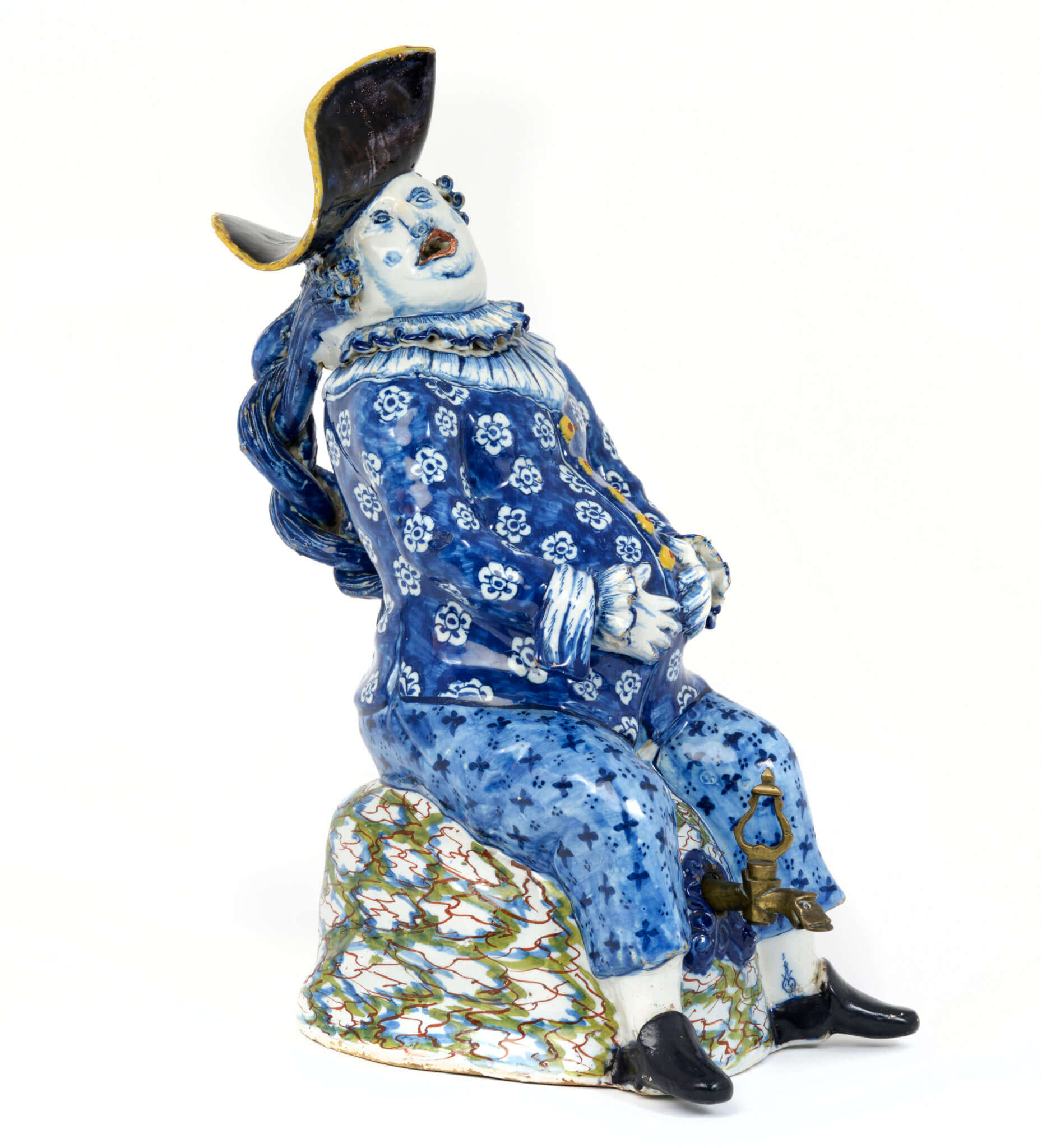D1876. Polychrome Figural Cistern
€24.000,00
Delft, circa 1760
Modeled as a ‘Bobbejak’ (portly man) with wide open mouth wearing a dark manganese tricorn hat, a wide ruffled collar, and a blue yellow-buttoned jacket with white flowerheads over a shirt with ruffled cuffs, the light blue ankle-length trousers with dark blue trefoil leaf sprigs and dots revealing his simple dark blue shoes, his hair with two rows of tight curls over his ears and extending into long braid forming the handle affixed to his waist at the back, his hands placed on his ample belly, and seated on a green, blue and iron-red marbleized rock applied at the front between his shins with a blue rocaille cartouche with an aperture for a spout.
Dimensions
Height: 37 cm. (14.6 in.)
In stock
Description
Note
Figural cisterns of various male and female models, probably intended for beer, gin or wine, are referred to in Dutch as ‘Bobbejakken’, whereas their French derivatives are called ‘pots-Jacquot’ or ‘pots-Jacqueline’, and the English variations are called ʻToby jugsʼ (a name possibly derived from the jovially intoxicated Sir Toby Belch in William Shakespeareʼs play, Twelfth Night, but more likely from the notorious eighteenth-century Yorkshire toper, Henry Elwes, who was known as ʻToby Fillpotʼ (or Philpot), and who inspired a popular English drinking song, ʻThe Brown Jugʼ, as well as a print published in 1761 by Carver and Bowles, London, which paid tribute to the then-infamous “Toby Fillpotˮ). Some of the Dutch Delft examples may be based on eighteenth- or nineteenth-century penny prints of the type depicting ‘Trijn en Hans Altijddorstʼ (ʻTrijn and Hans Always-thirstyʼ), published by J. B. Ulrich, Rotterdam, circa 1820-50, and illustrated ibid., p. 102, no. 67, fig. 1.
Condition
-
- Some minor repaired chips to rim of hat and finials




